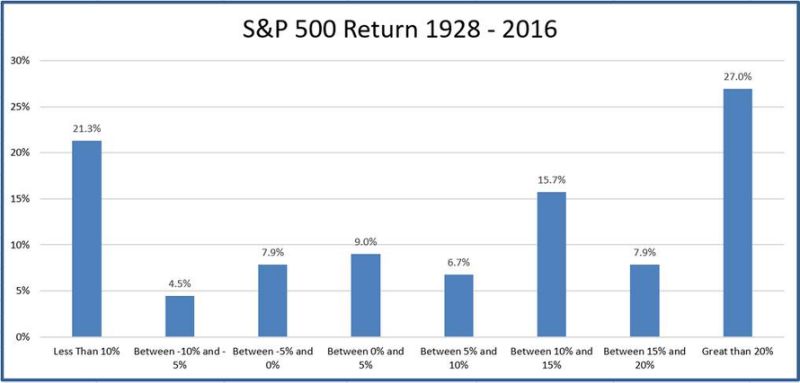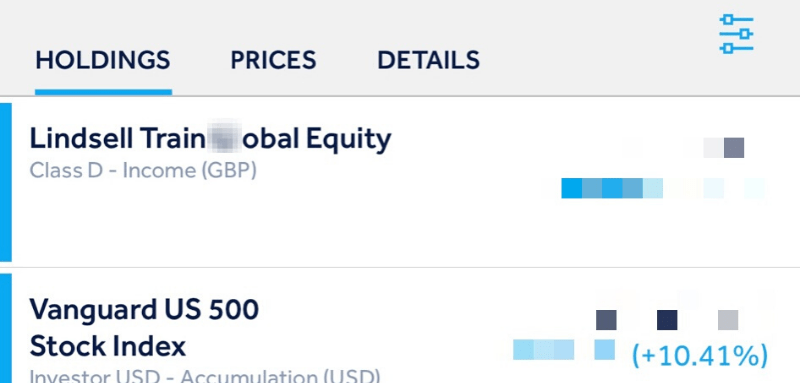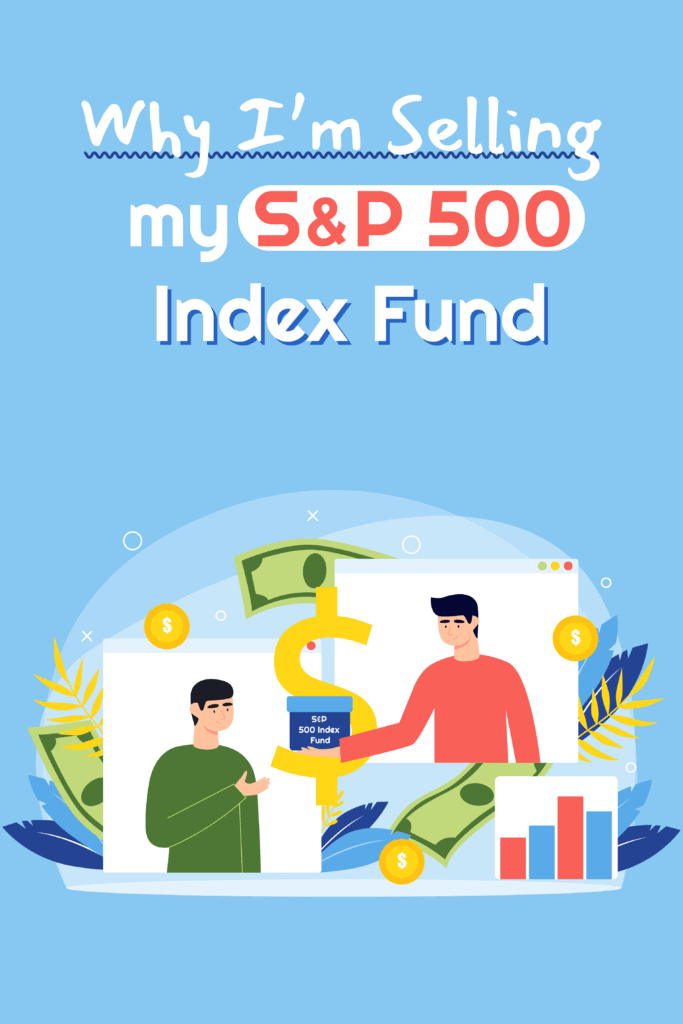Disclosure: This post may contain affiliate links. If you click on a link I may make a small commission at no extra cost to you. You can read the full disclosure here.
Last Updated on October 23, 2022 by Chris Panteli
I have made the decision to sell my S&P 500 Index Fund. That doesn’t mean I won’t be investing, far from it. In fact, I am moving all my funds to a single investment – with a guaranteed 25% annual return on invested capital. Keep reading to find out more.
The content of this post is for informational purposes only, you should not construe any such information or other material as legal, tax, investment, financial, or other advice.
Do you own an S&P 500 Index Fund?
Index fund investing has become increasingly popular over the last few years. With its low costs, passive nature and the decent average annualized returns over a number of years you can see why so many have invested. It has truly been a great way to UpSwing one’s investment portfolio.
S&P Index funds such as the Fidelity ZERO Large Cap Index or the Vanguard S&P 500 offer instant diversification. In one purchase you can own a wide range of companies from many different sectors in the US economy. The S&P has returned an average of 10% annually over a number of years.

Up and Down
As of writing this post (Febuary 2020) the S&P 500 is at its all-time high. The index fund which I own (Vanguard US 500) via the investment platform Hargreaves Lansdown is also at an all-time high (as it tracks the S&P). So the question has to be asked. Will this market continue to rise?
Of course, the market could continue to climb and reach even dizzier heights. My current portfolio includes Nick Train’s Lindsell Train Global Equity Fund, the Fidelity Index World Fund, and the iShares Overseas Corporate Bond Index, and these have performed well over the past 12 months (2-4%). However, my low-cost Vanguard US 500 index fund, which constitutes the lions share of my total investment, currently stands at an impressive 10.41%. So why the hell do I want to sell?
The current bull market started in March 2009 and is the longest on record. This can make investors nervous. For example, the outbreak of the coronavirus in China caused the largest fall for the S&P in a three month period of 1.57%. It did recover a few days later and then surpassed all-time highs by the following week.
Analysis – What History Tells Us
Yield Curve Inversion
So is a recession on the horizon? Towards the end of 2019, there was a brief inversion of the 2-year and 10-year Treasury bonds – a historic indication of a looming recession. However, history shows that the average downturn doesn’t occur until about 22 months after this event – which could give some breathing room.
Above Average Returns
Historically the stock markets tend to perform well following a previous year with gains of at least 20%. The S&P returned a steller 30.43% in 2019. Since 1981 the US stock market has achieved gains of 20% or more 11 times, and only ONCE achieved lower returns the following year.
Corrections
So the historical data seems to suggest one should hold their S&P 500 investments – at least for the short term. It should also be mentioned that investments of this nature should actually be for the long term. The market will always suffer pullbacks and corrections – and the S&P 500 is no different. Over the last 70 years, the S&P has experienced 37 corrections of at least 10%. A long term approach to stock market investing of this type SHOULD account for these ups and downs. In fact, the power of Pound Cost Averaging could actually utilise these movements to your advantage.
Pound Cost Averaging
Pound Cost Averaging, or Dollar Cost Averaging for our American friends, is the process of investing sums of money over a period of time – rather than a single lump sum all at once. It could be a fixed monthly amount into your chosen investment.
The idea behind this strategy is to protect oneself from falling markets. For example, if the S&P 500 began to fall sharply then only your invested portion would suffer – as opposed to your entire lump sum. Also, the subsequent portions of investments would be getting you in at lower and lower prices as the markets continue to fall – allowing for greater returns when the market recovers.
The downside of Pound cost Averaging is that markets actually rise the majority of the time. In fact, the past 20 years have seen the stock market rise 60% of individual months. This would mean that using Pound Cost Averaging would cause you to buy at increasing prices – not a great strategy. However, if you are more risk-averse it does protect you from market downturns.
My personal S&P 500 Index fund currently stands at a fantastic 10.41% – outperforming the best savings account (2.75%) by a country mile. I had also been using the Pound Cost Averaging strategy to minimise my exposure to any market falls – which I do believe is coming – eventually anyway.

Why the hell are you selling then?
My recent diagnosis of type 1 diabetes has given me a completely different perspective on life. Initially, I was concerned something more serious was afoot – and this filled me with panic. It could have been anything! But thankfully it was confirmed to be diabetes, which is totally manageable and now much more under control. I felt a sense of euphoria after my diagnosis and felt determined to get my affairs in order. I finally started this blog, began the process of developing my app idea and started to rethink my investments.
The Long Game
I am very happy with the returns I achieved so far. I am also ‘in it for the long run’, meaning I would be prepared to allow my Pound Cost Averaging strategy to play out. If the markets do fall then holding an S&P 500 Index should produce its average market returns of approximately 10% over the long term (5-20 years). But if I am prepared to play the long game is 10% the best I can achieve? Can I get more? Can I get more with ZERO risks?
25% RETURNS ON CAPITAL INVESTED | 0% RISK

God Bless the Government
The UK government introduced the Lifetime ISA (LISA) in 2017. Available to UK citizens aged between 18 and 40 it is a way to save for either a first-time home purchase or retirement. For those of you who haven’t already purchased your first home, your money will not be locked away depending on your age – as you will be able to access your money as soon as you want to buy your property. If you have already owned a home (as I have) then you will be saving for retirement – which means you can’t withdraw until your 60th birthday (unless facing a penalty).
I am currently 32 years old and therefore need to wait 28 years before being eligible to access my LISA. This is absolutely fine for me though, as a good 3 decades is what’s probably needed for an index fund to achieve its maximum value. But here is the best part…
The Returns
You are allowed to save a maximum of £4000 per year into a LISA – for which the government will pay you a 25% bonus per year. That means for every £4000 you save – you get back £1000. That’s an annual return of 25% on the invested capital – 100% risk-free.
Cash LISA
It is important to note that this is not adjusted for inflation. So as time moves on the £1000 returned will become less valuable. and this is certainly true of the cash LISA, which truly is risk-free. The cash LISA acts like a savings account in which you earn interest and there is no risk to your investment.
Stocks and Shares LISA
The Stocks and Shares LISA allows you to invest in funds with varying risk factors. This can offer substantially higher returns but may also result in losses. The losses can be minimised however with the combination of 2 factors. Choosing a fund with the least amount of associated risk and allowing for your 25% bonus to cover any losses.
The Possibilities in your 30’s
If you invest the full £4000 per year from your 30th birthday (until the maximum age of 50) then your Lifetime ISA could be worth £232,671 (assuming 5% growth).
This will include a £21,000 government contribution.
The Possibilities in your Teens
If you invest the full £4000 per year from your 18th birthday (until the maximum age of 50) then your Lifetime ISA could be worth £472,343 (assuming 5% growth).
This will include a £33,000 government contribution.
Note 1 – you don’t have to invest £4000 per year, this is just the maximum. The LISA will pay 0.25p (25%) for every £1 invested.
Note 2 – anything you invest in a LISA counts towards your total ISA annual limit – currently at £20,000.
Conclusion
An S&P 500 Index fund is an excellent choice for a long term investment. Using a Pound Cost Averaging strategy will help weather the storm for periods of a market downturn. In the long run, you should see a healthy return. I am selling the majority of my holdings in the S&P Index fund in favour of the Stocks and Shares Lifetime ISA. A guaranteed 25% return (£1000 per £4000 invested) makes sense for me. I will continue to invest a small portion of my income into the S&P Index fund, but my main objective is to reach the £4000 annual limit within my LISA – and UpSwing my retirement.
I hope this has been helpful and would like to recommend a couple of resources for more information:
- https://www.gov.uk/lifetime-isa
- https://www.moneysavingexpert.com/savings/lifetime-isas/
- https://www.fool.com/investing/2019/03/01/3-reasons-you-should-be-investing-in-index-funds.aspx








